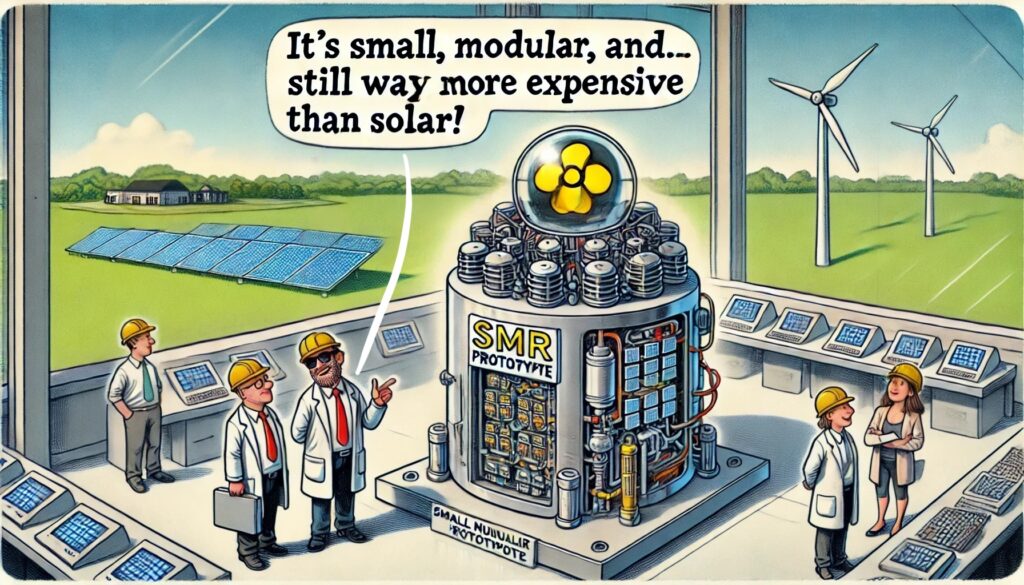
(LinkedIn : https://www.linkedin.com/pulse/why-small-modular-reactors-cant-compete-renewables-clean-marcoux-nbghe.)
Nuclear small modular reactors (SMRs) are often discussed alongside renewables, such as solar panels, wind turbines, and batteries, as potential solutions for clean energy generation. While SMRs may hold promise for niche applications, such as providing reliable power in remote locations or areas with limited renewable potential, they face significant challenges in competing with solar and wind for mainstream electricity generation due to several inherent factors:
- Lack of Cost Reductions in Nuclear Technology.
Over the last 60–70 years, nuclear reactors have experienced minimal cost reduction and very long lead times, with recent trends even suggesting increased costs despite technological advances. This lack of progress indicates that nuclear energy may not undergo substantial cost reductions in the foreseeable future. - Economies of Scale.
Large nuclear reactors benefit from economies of scale, as the cost of components like boilers and steam turbines decreases proportionally when scaled up. In contrast, SMRs intentionally do not take advantage of these benefits, leading to higher costs per kilowatt hour compared to their larger counterparts at the same learning level. However, SMRs aim to compensate for this early disadvantage with a faster learning curve and shorter lead times. - Delayed Learning Curve.
As a new technology, SMRs lack an established learning curve. In contrast, solar panels have a well-established cost-reduction rate of about 30% per doubling of production, while wind turbines and batteries exhibit learning curves between 15% and 25%. - Technological Complexity.
SMRs are intricate technologies, similar to large airliners and fighter jets. These complex systems typically have slower cost reductions compared to simpler, modular technologies like solar panels, wind turbines and batteries, which can be efficiently mass-produced. SMRs learning is also slowed by the inherent safety considerations associated with their nuclear nature. - Government Push vs. Technological Limitations.
While strong government backing can accelerate deployment, it cannot fundamentally alter the cost trajectory of a technology. The learning curve is intrinsic to the nature of a technology, meaning SMRs are constrained by their intricate nature, manufacturing hurdles, and safety requirements. - Renewables Advantage in Mass Production.
Solar panels and batteries are relatively simple to manufacture and deploy, resembling products that can be “printed” and mass-produced. Wind turbines are far simpler than SMRs, which enables rapid cost reductions and widespread adoption. This gap between renewable energy and SMRs continues to widen.
In summary: SMRs face structural disadvantages in terms of cost, scalability and technological improvement rates compared to solar panels, wind turbines and batteries. These technologies are already cheaper, more scalable and improving at a much faster rate. Nuclear energy, including SMRs, may have a place in regions with limited solar or wind resources. However, renewable energy sources should be the preferred choice in the pursuit of cost-effective and environmentally friendly energy generation.